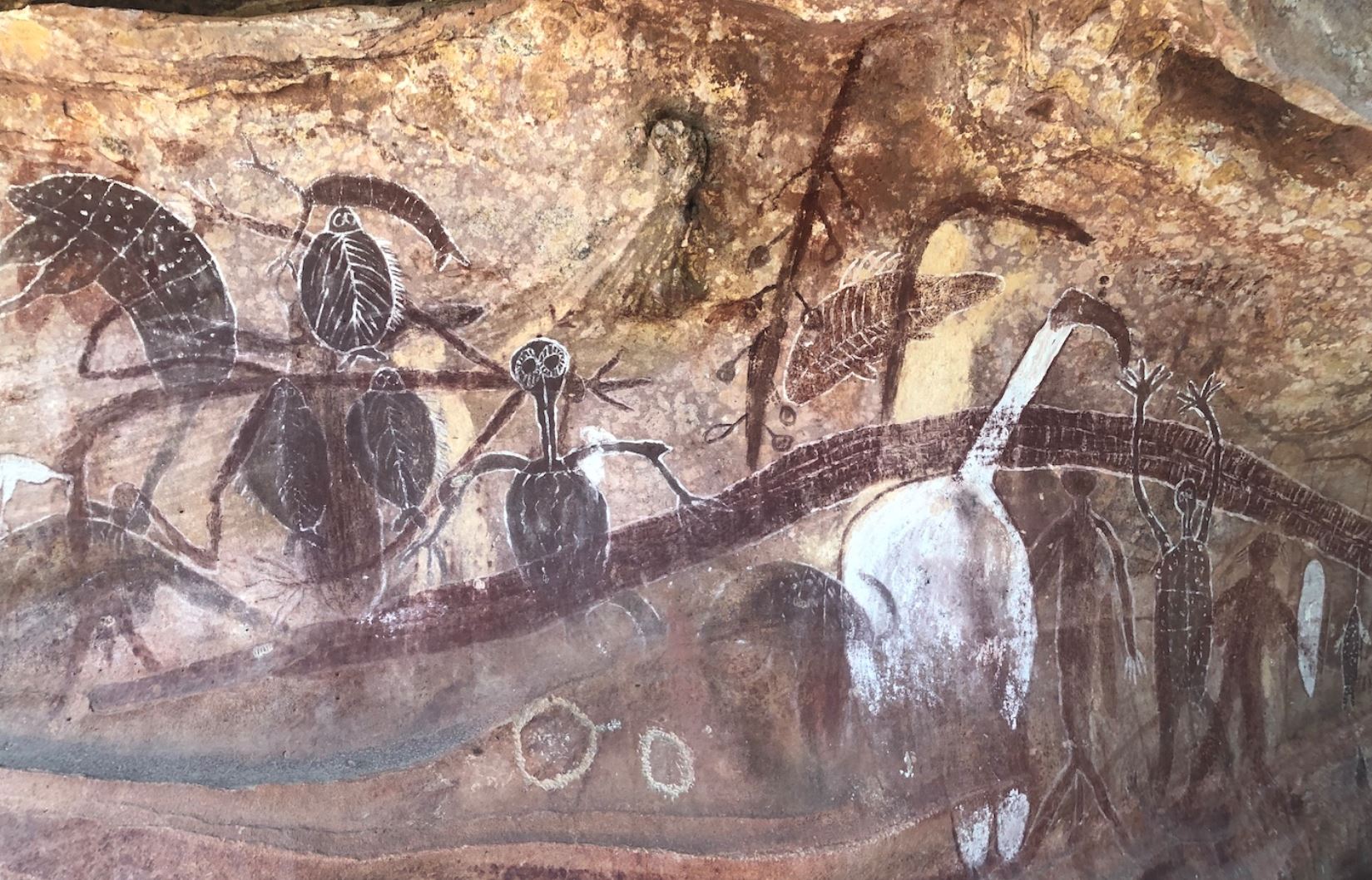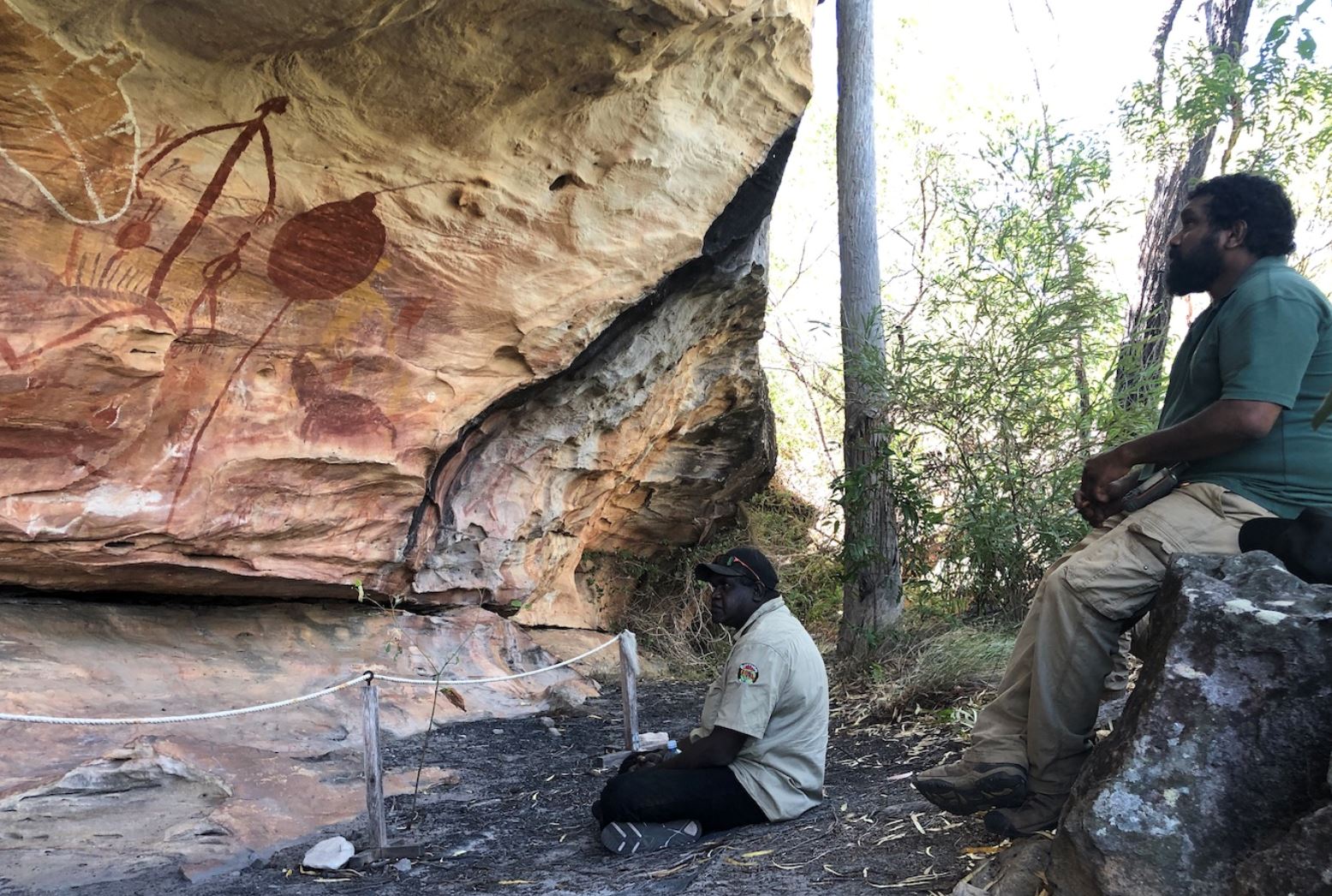
Flinders University archaeologists will join a major new Australian Research Council Linkage project investigating Aboriginal rock art and cultural heritage management on Queensland’s Cape York Peninsula.
The $1.342 million project (LP1901001940), led by Notre Dame University, with Flinders University, Griffith University, University of Southern Queensland, the University of Tasmania and University of Adelaide collaborators, is a major partnership with a number of Indigenous community organisations and agencies in the region.
The University of Notre Dame Australia’s Nulungu Research Institute’s Dr Lynley Wallis and the team of experts and partners will spend the next five years mapping the largely unexplored Laura Sandstone Basin of Cape York Peninsula which hosts one of the richest bodies of rock art in Australia and the world.
Flinders chief investigators Associate Professor Heather Burke – who with Dr Wallis and others leads the Archaeology of the Queensland Native Mounted Police project – ARC DECRA research fellow Dr Daryl Wesley who researches rock art in Arnhem Land in the NT, and Flinders adjunct Dr Tristen Jones, from ANU, will support the new archaeology project in Far North Queensland.
The sandstone rock shelters that surround the Cape York Peninsula town of Laura form the southern rim of the Laura Sandstone Basin and are home to some of Australia’s most iconic Indigenous rock art, recently inscribed on the National Heritage List as ‘Quinkan Country’.
Rugged, well-watered, and largely inaccessible except by helicopter, this location presents an exciting opportunity for unprecedented research, and it is an opportunity that The University of Notre Dame Australia’s Senior Researcher, Dr Lynley Wallis, has wholeheartedly taken up.
“This project will be the first study to systematically map, document and analyse the cultural heritage and rock art of the Laura Sandstone Basin,” says Dr Wallis, who also has an academic affiliation with Flinders University.
“We’ll be using cutting edge technological, chronological and joint archaeological and Traditional Owner approaches and perspectives.”
The approaches to be employed throughout this project not only utilise the latest technology, but the entire process will be supported by an extensive network of partners, including six different Aboriginal Corporations, six universities, and the Queensland National Parks and Wildlife Service.

“The partners working on this project have widespread experience working successfully as a team, including on large-scale projects like this,” Dr Wallis says.
The Laura Sandstone Basin occupies an onshore area of 18,000km2 – over 16 times the size of Hong Kong. Even with the best available technology at hand and a team of dozens, the entire project is expected to take five years. And it is expected to generate many more subsequent projects.
“The politics and governance of Aboriginal communities and lands in Cape York Peninsula are extremely complex. This makes for a challenging operational environment, especially for researchers wishing to engage effectively with the multitude of Traditional Owner groups that have cultural responsibilities for the Laura Sandstone Basin.
“However, our team has the benefit of including several researchers who already have strong, long-term and highly positive working relationships with existing Indigenous groups. In one case, that of Dr Noelene Cole, this relationship stretches over a period of more than 30 years.”

These relationships form a key focus for the project. Adopting a decolonised approach to archaeological and cultural heritage research means Aboriginal people are recognised as the primary owners and guardians of their own heritage. Beyond this, they have been integral in designing the nature and scope of the project, and will be critical team members during the extensive fieldwork that lies ahead.
The project will deliver training to Aboriginal communities in the management and conservation of these incredible art sites, ensuring that they will be protected for years to come.
The Federal Education Minister Dan Tehan says the new Linkage project “will record the unique Indigenous rock art from an area of Australia that is virtually unexplored from an archaeological perspective”.
“This research will produce data of national scientific and social significance that will help us better understand our first Australians … and will see Traditional Owners, ranger groups and land mangers working with researchers to improve the promotion, conservation and management of our Indigenous history,” Mr Tehan says.
Federal Leichhardt MP Warren Entsch says Cape York’s rock art could become another significant tourist attraction for the region.
“This project will promote economic and social opportunities for Indigenous communities in remote parts of Cape York,” Mr Entsch says.
“Rock art tours are a popular tourist attraction in our region, and this project could unlock more opportunities, leading to business growth and job creation while also ensuring the areas are managed and protected.”
The Balnggarrawarra Aboriginal Corporation, South Cape York Catchments, Buubu Gujin Aboriginal Corporation, Cape Melville Flinders and Howick Islands Aboriginal Corporation, Laura Indigenous Land and Sea Rangers, Waarnthuurr-iin Aboriginal Corporation, Wallis Heritage Consulting and Department of Environment and Science are among the collaborators.
Flinders University Archaeology has a number of other ARC and special projects, including another ARC Linkage project, ‘Sugarbag and shellfish: Indigenous foodways in colonial Cape York Peninsula,’ led by Flinders University chief investigators in collaboration with multiple organisations and community partners.
The Australian Government this week announced $4.5 million in funding for several new research projects under the Australian Research Council Linkage Projects scheme.

